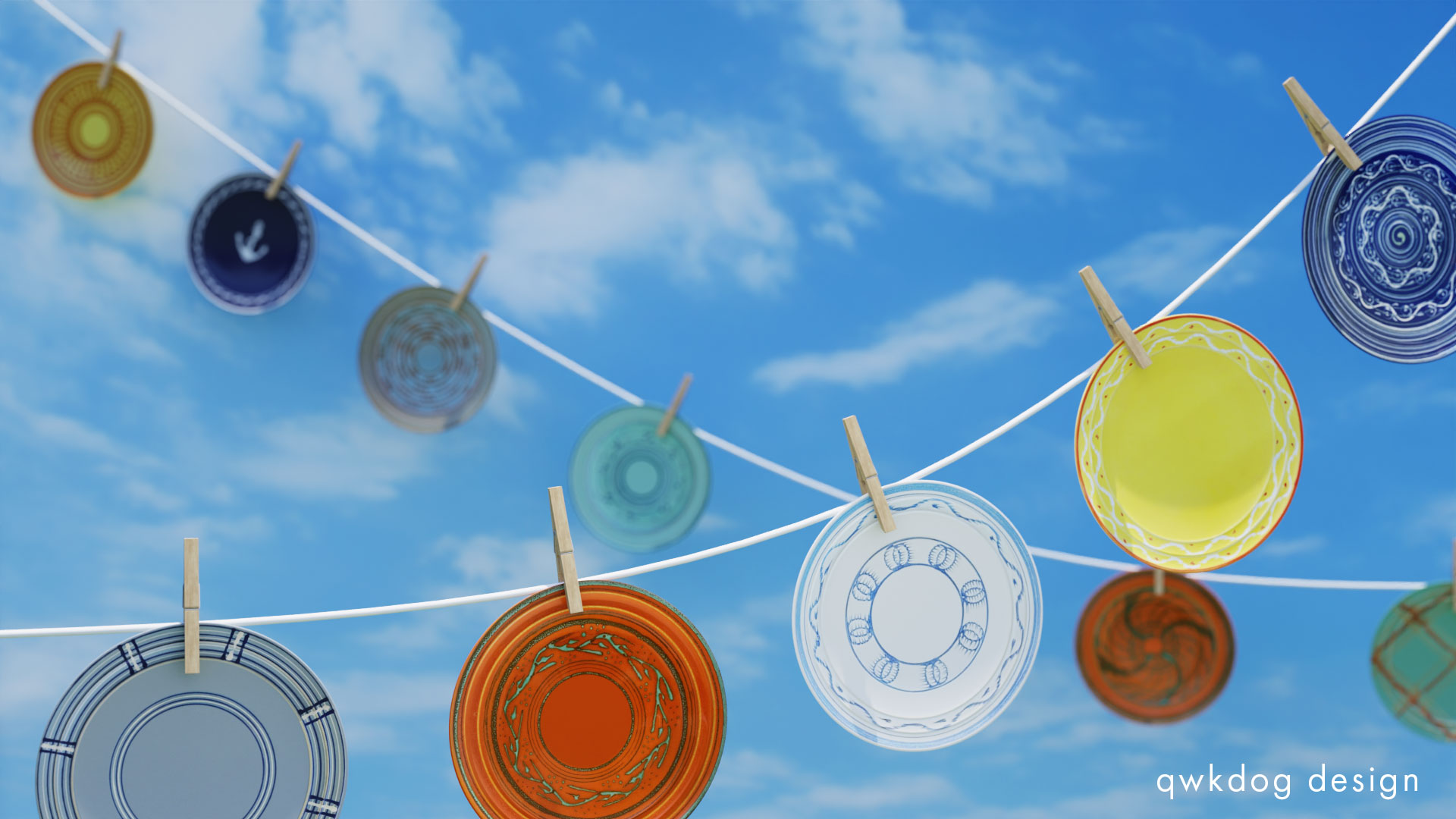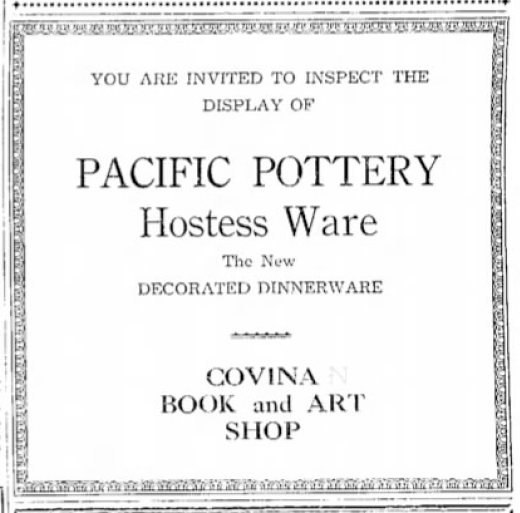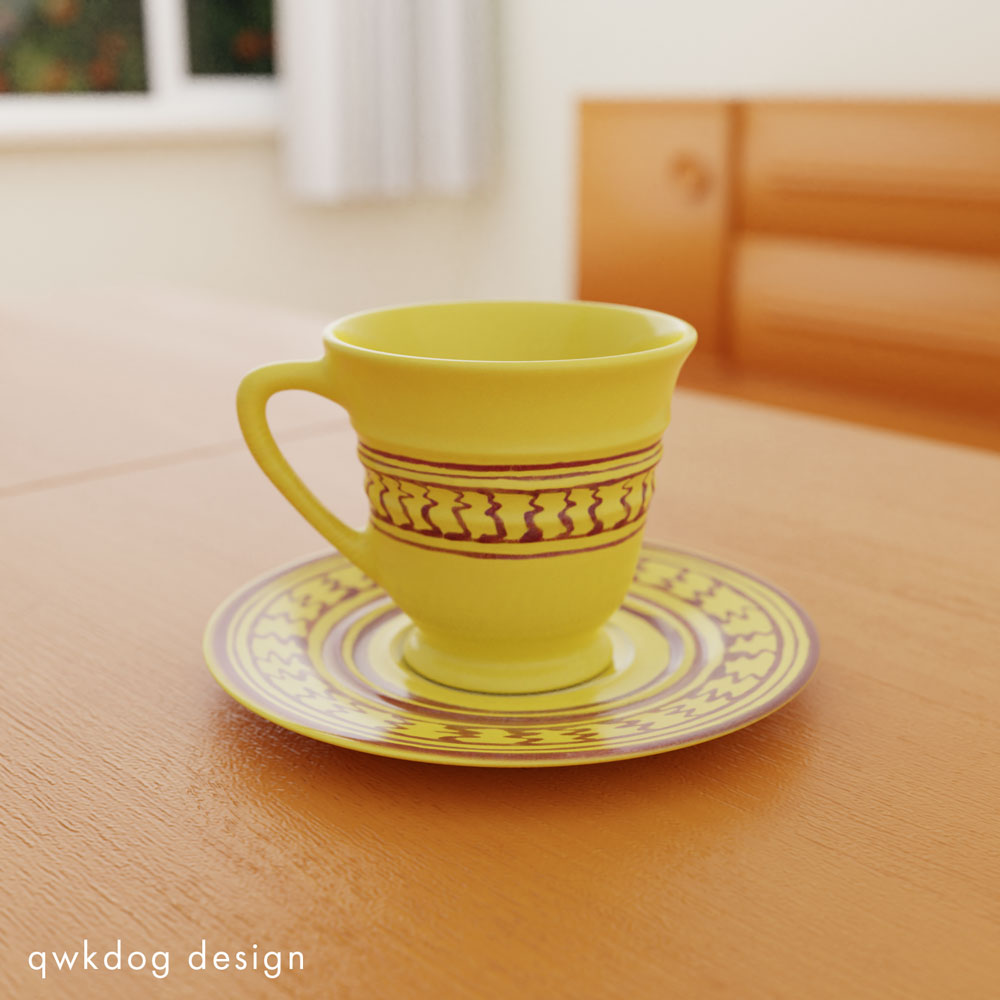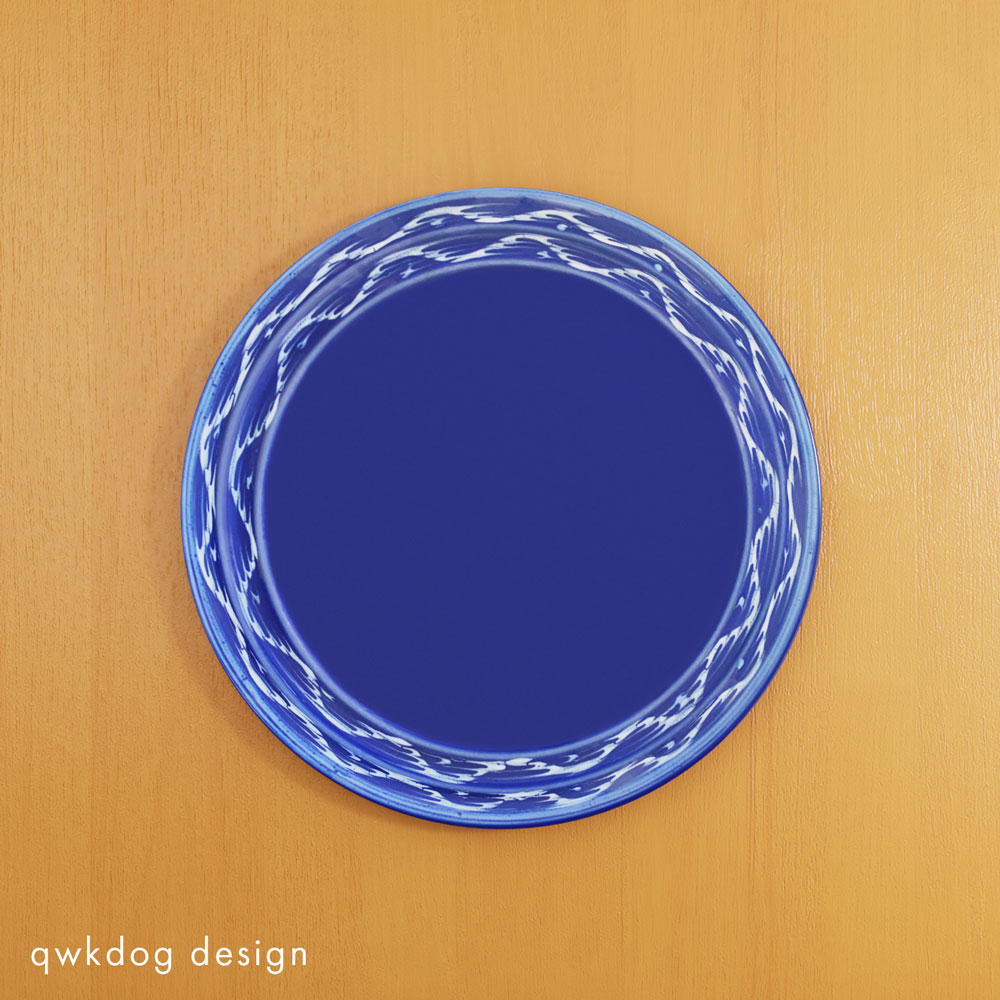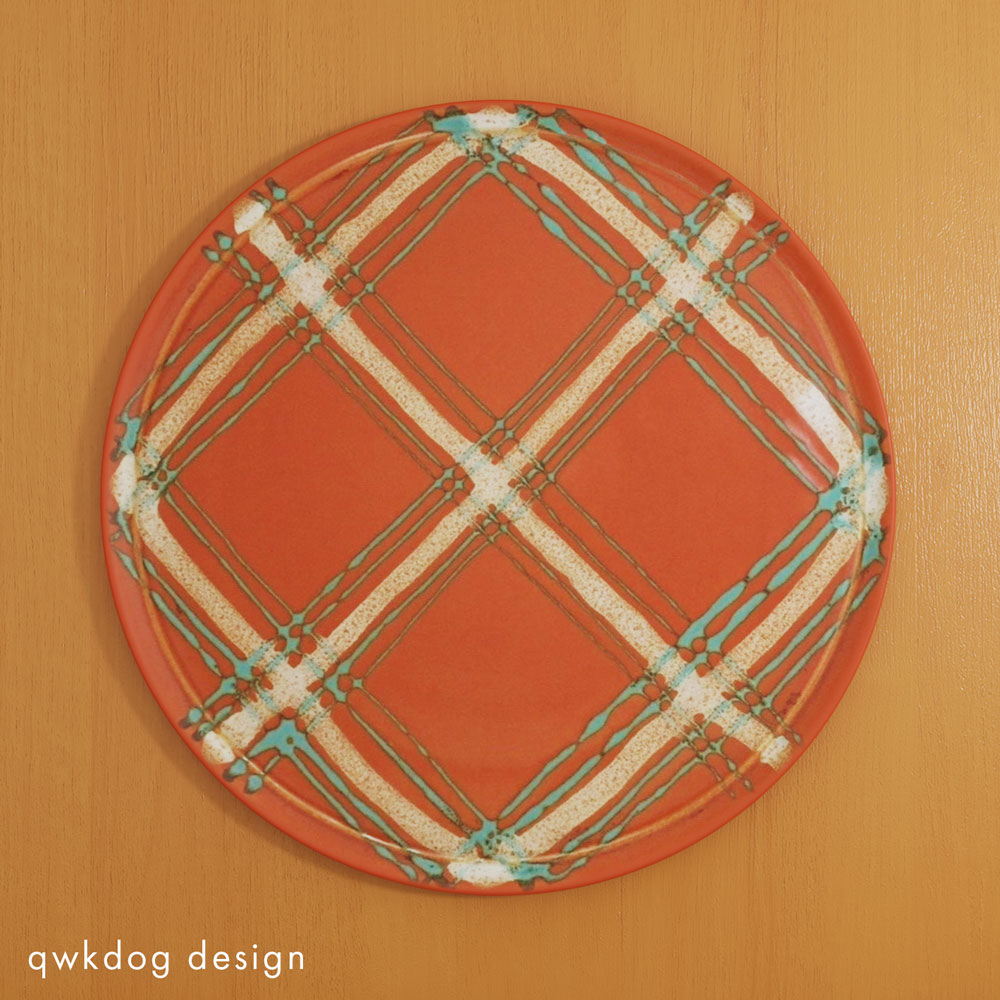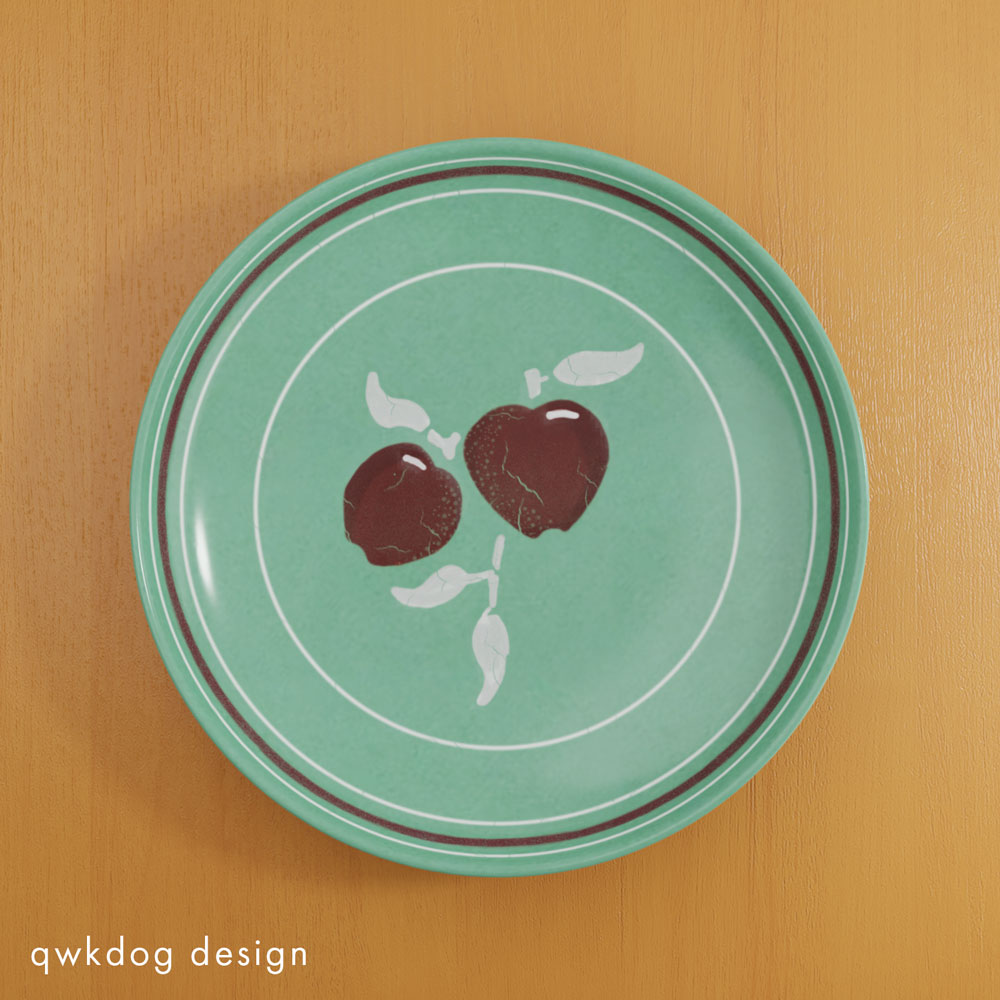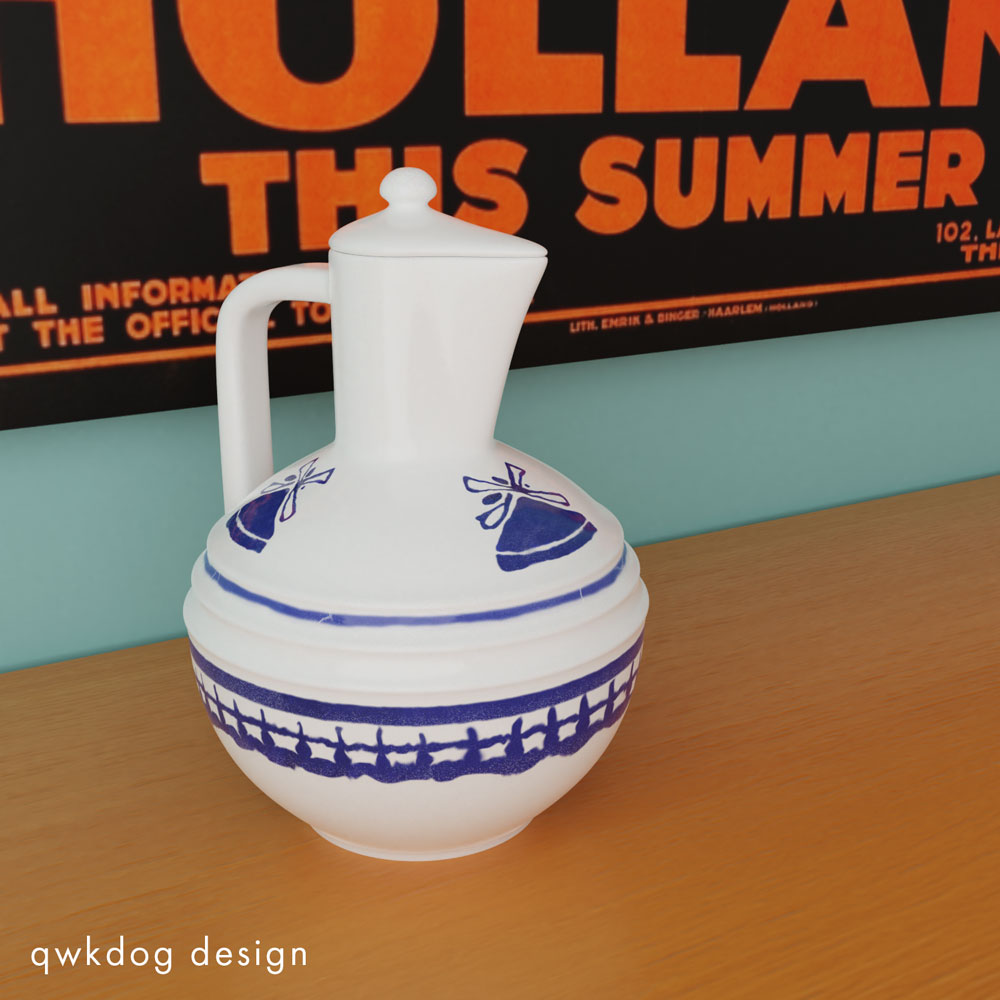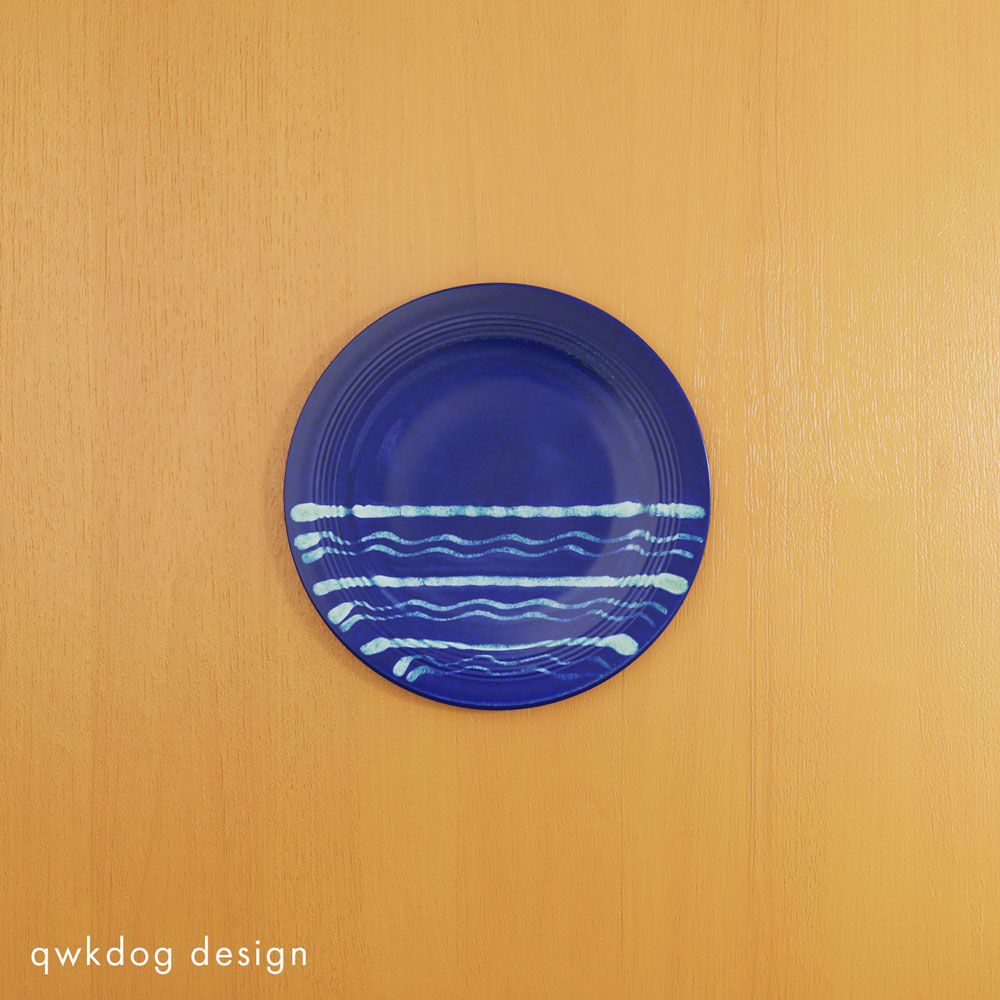Pacific Pottery introduced their “decorated” lines – a series of in-glazed patterns on the Hostessware shape sometime around 1934, as evidenced by the newspaper display ad to the right. Covina is a town in Los Angeles County 22 miles east of downtown. I suspect (but can’t definitively confirm) that Pacific produced decorated ware until approximately 1937 since most decorated ware is found with the older in-mold marks. Pattern decoration was “women’s work,” with decorator applying the patterns by hand, often using a spinning wheel. No one knows who created the pattern designs, but the variety is incredible. It’s not uncommon to find what may be one-of-a-kind designs with no identifying pattern ID at all.
Most of the Pacific decorated patterns have letter or numeric pattern names assigned by the company. Even unique patterns may feature a pattern ID. A few patterns are designated by their design, like “Wheat Spray” or “Willow.” Collectors will find decorated ware marked with a pattern stamp, a handwritten notation, or none at all. In fact, designs like “Wheat Spray,” “Willow,” and “Chrysanthemum” are never marked, but we know the official pattern names since they appear in company catalogs.
Pacific Pottery decorated pieces are most commonly found on plates and platters, although the occasional serving piece shows up. More commonly found patterns include the “BG” plaids, 2007 and 2008 circle designs, “BH” sine waves, and “BF” hub and spoke. I believe that decorated patterns were available to department and specialty stores by custom order only. Since it’s all hand decorated, even within a pattern each piece can be completely unique. It’s fun to see how a pattern can be represented across different size plates.
Due to its bespoke production and relative cost, decorated ware is hard to find today.






